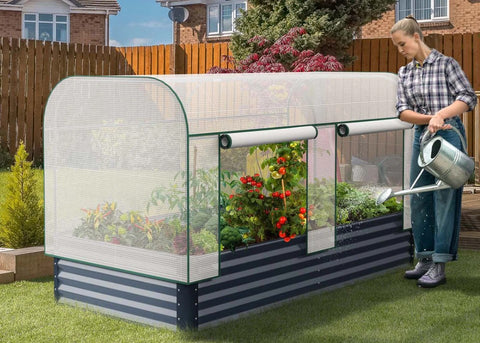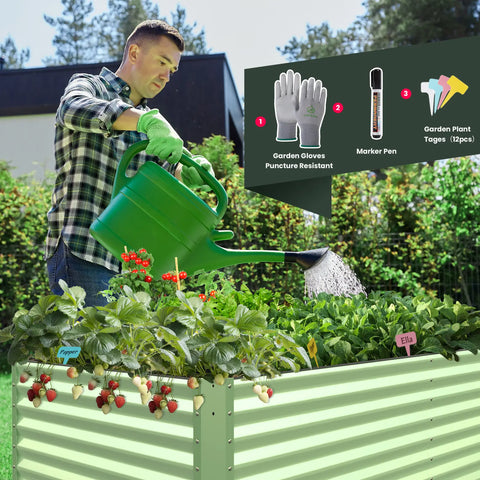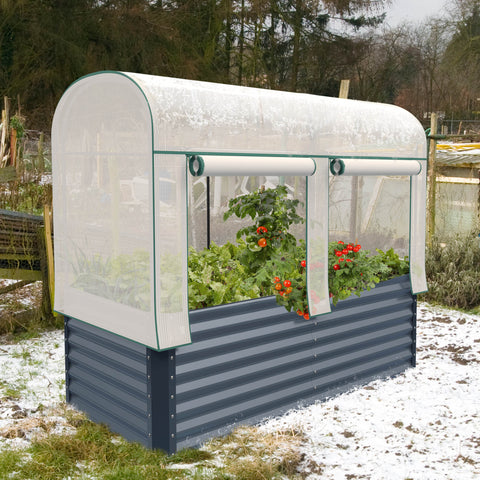Introduction: The Enchanting World of Homegrown Herbal Teas
There's a certain magic in sipping a cup of tea crafted from herbs nurtured in your own garden. The combination of flavors, aromas, and the act of cultivating these herbal wonders adds a unique charm to the tea-drinking experience. In this blog, we'll explore the enchanting world of homegrown herbal teas, guiding you through the herbs that you can easily cultivate to create your own magical tea garden.

1. Chamomile: Soothing Elegance
Growing Tips:
Chamomile thrives in well-drained soil and loves sunlight. Plant the seeds or seedlings in early spring, and watch as delicate, daisy-like flowers bloom.
Flavor Profile:
Known for its mild, apple-like flavor, chamomile is prized for its calming properties. Harvest the flowers for a comforting and soothing herbal infusion.
2. Mint: Refreshing and Invigorating
Growing Tips:
Mint is a hardy herb that flourishes in various conditions. Plant it in a container to prevent it from spreading too aggressively. Provide partial shade and consistent moisture.
Flavor Profile:
Choose from a variety of mint types, such as peppermint or spearmint, each offering a refreshing and invigorating taste. Mint tea is perfect for hot or iced infusions.

3. Lavender: Fragrant Tranquility
Growing Tips:
Lavender prefers well-drained soil and lots of sunlight. Plant it in a sunny spot, and ensure good air circulation to prevent fungal issues.
Flavor Profile:
Lavender imparts a delicate floral flavor to tea, evoking a sense of tranquility. Harvest the blossoms just before they fully open for the best flavor.
4. Lemon Balm: Citrus Bliss
Growing Tips:
Lemon balm is a resilient herb that thrives in well-drained soil and partial shade. It can be invasive, so consider planting it in containers.
Flavor Profile:
With a lemony aroma and mild citrus taste, lemon balm adds a bright and cheerful note to herbal teas. Harvest the leaves for a delightful infusion.

5. Rosemary: Herbal Resilience
Growing Tips:
Rosemary prefers well-drained, sandy soil and plenty of sunlight. This hardy herb is known for its resilience in various conditions.
Flavor Profile:
Rosemary infuses tea with a robust and pine-like flavor. It pairs well with other herbs and can be used to create aromatic herbal blends.
6. Hibiscus: Vibrant Elegance
Growing Tips:
Hibiscus thrives in well-drained soil and full sunlight. This tropical beauty is not only flavorful but also adds a burst of color to your tea garden.
Flavor Profile:
Known for its tart and cranberry-like taste, hibiscus petals create a vibrant and refreshing herbal tea. Harvest the vibrant red blossoms for optimal flavor.

7. Thyme: Earthy Simplicity
Growing Tips:
Thyme prefers well-drained soil and plenty of sunlight. This versatile herb is easy to grow and can withstand various growing conditions.
Flavor Profile:
With an earthy and slightly minty flavor, thyme adds a layer of complexity to herbal teas. Harvest the leaves for a soothing and aromatic infusion.
8. Sage: Herbal Wisdom
Growing Tips:
Sage thrives in well-drained soil and full sunlight. It's a drought-tolerant herb, making it a resilient addition to your tea garden.
Flavor Profile:
Sage imparts a savory and slightly peppery taste to herbal teas. Known for its calming properties, sage tea is a comforting and aromatic choice.

9. Fennel: Anise Delight
Growing Tips:
Fennel prefers well-drained soil and full sunlight. This aromatic herb is known for its feathery foliage and licorice-like flavor.
Flavor Profile:
Harvest the fennel fronds for a tea with a subtle anise flavor. Fennel tea is both soothing and refreshing, perfect for after-dinner relaxation.
10. Calendula: Golden Elegance
Growing Tips:
Calendula thrives in well-drained soil and full sunlight. Known for its vibrant golden petals, calendula adds a touch of elegance to your tea garden.
Flavor Profile:
Calendula tea has a mild, slightly peppery taste. Harvest the petals to create a golden-hued infusion that is both visually stunning and delightful to the palate.
Conclusion: Crafting Your Magical Tea Garden
Embarking on the journey of growing your own herbal tea garden is a delightful endeavor that connects you with nature and the soothing ritual of tea drinking. As you cultivate chamomile, mint, lavender, lemon balm, rosemary, hibiscus, thyme, sage, fennel, and calendula, you're not just growing herbs; you're nurturing a haven of flavors and fragrances that will enchant your senses with every sip. The magic of tea gardens lies in the simplicity and elegance of cultivating your own herbal infusions, transforming tea drinking into a personal and magical experience that unfolds right in your backyard.









